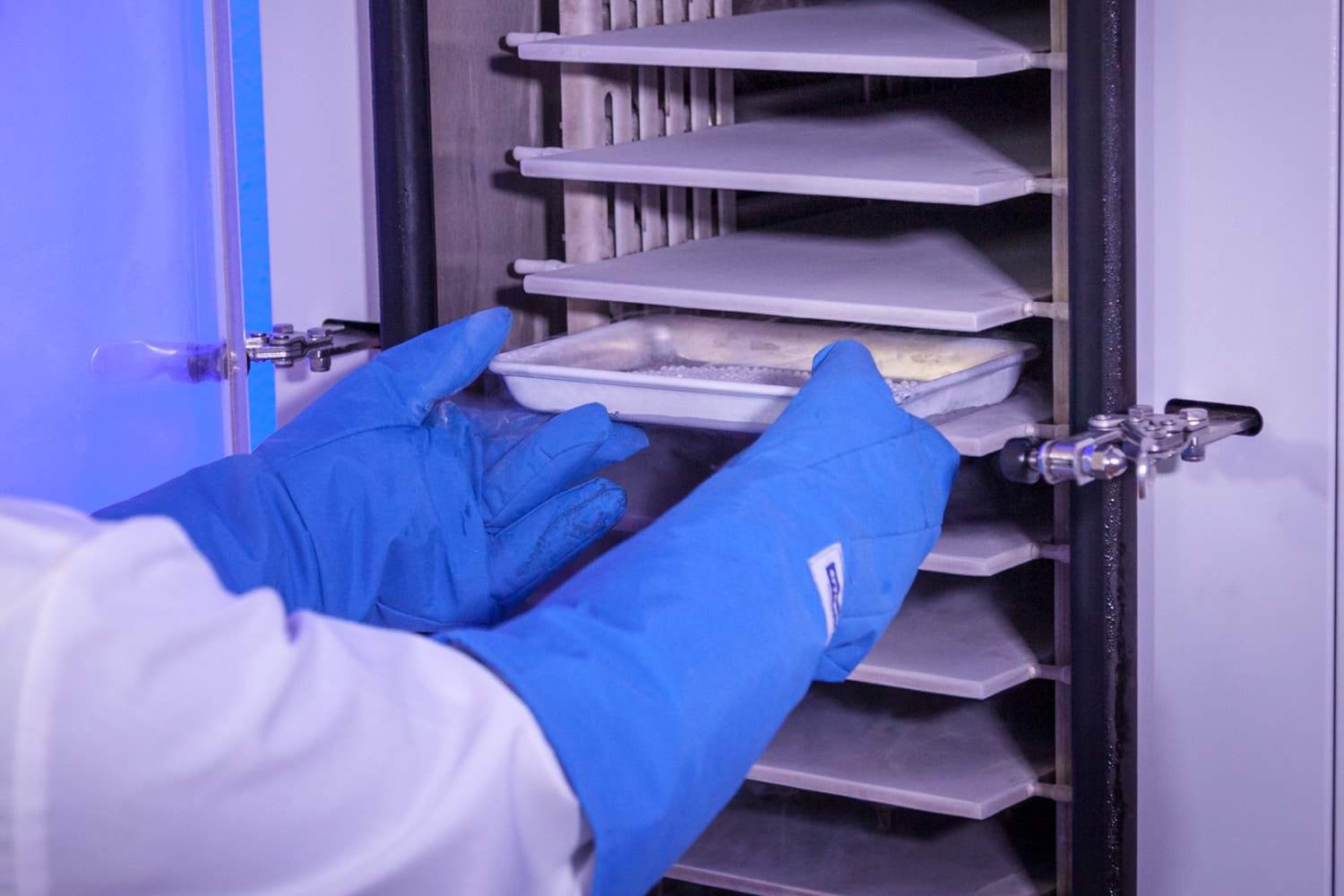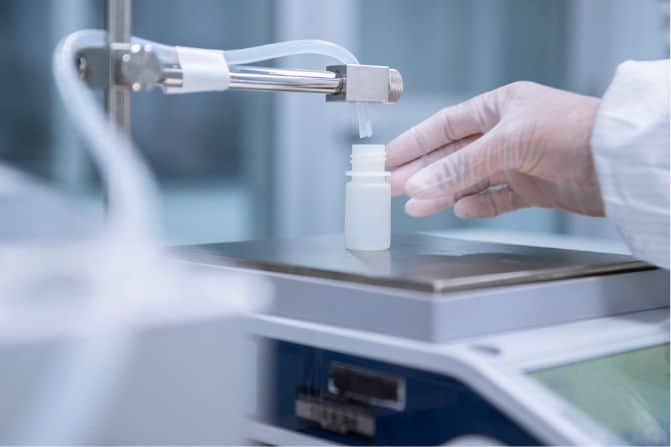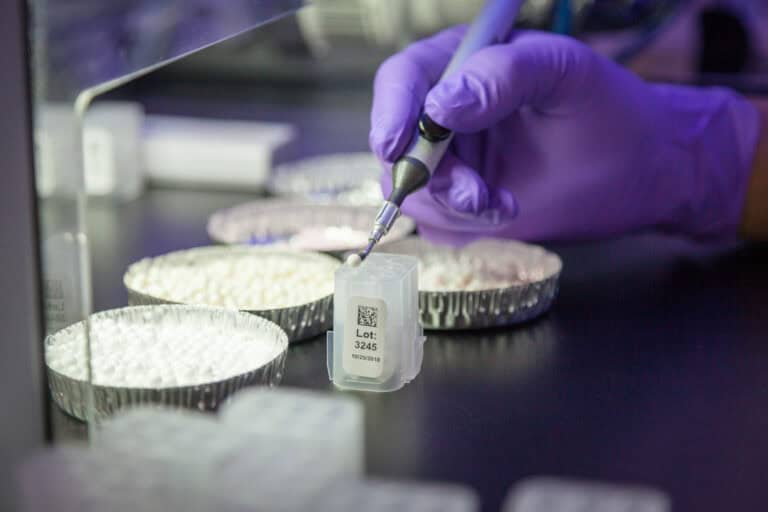Questions to ask when outsourcing reagent and assay lyophilization
Upgrading your reagent or assay with lyophilization offers many advantages, but it can be difficult knowing how to start the process. At Argonaut we work with a wide range of clients, from the smallest startups to the largest biotechs. While these companies are considerably different, they tend to ask similar questions:
- How do I know if lyophilization will work with my product?
- Is investigating reagent or assay lyophilization a large commitment?
- Can I add lyophilization and still meet my production deadline?
In this article, we cover the process of adding lyophilization to your product, from start to finish. Whether you have a new product still in R&D or an industry staple already on the shelves, there is a pathway to reagent or assay lyophilization that fits your needs.
The Feasibility Study
The first step on the lyophilization journey is the feasibility study. In the Argonaut lyophilization feasibility program, we optimize formulations and conditions to your product. Lyophilization uses an excipient (an inactive chaperone substance) to facilitate the freezing process. However, excipients are not one-size-fits-all, and each product benefits from testing several. A feasibility study for reagent or assay lyophilization through our program tests a minimum of three excipients across multiple lyophilization settings. By evaluating the performance of your product by functional testing, you select the optimal reagent or assay lyophilization parameters.
We optimize formulations and conditions to your product
Material requirements for performing the feasibility study are minimal. Most often, the output is only 100 LyoDose beads (or equivalent) of each excipient variant, so only a small amount of your product is needed for the feasibility study. Also, since the turnaround time is quite short (usually 1-2 weeks from starting the study), there is little impact on your overall development timeline. A reagent or assay lyophilization feasibility study is fast, inexpensive, and requires nominal sample, so there are few downsides.
The turnaround time is quite short – usually 1-2 weeks
Some teams come to us after trying lyophilization in the past, having achieved modest or mixed results. Even if you experienced poor outcomes in prior studies, it is still possible to succeed. With the exception of products containing cryoprotectants such as glycerol, many other factors can be overcome. Reagent or assay lyophilization is a complex process requiring expert knowledge, optimization, and specific equipment. Not all lyophilizers, excipients, or conditions are equivalent, and it takes years of experience to know which is best for your situation. If you tried reagent or assay lyophilization in the past with disappointing results, do not be afraid to try again!
The Argonaut feasibility study method was developed by lyophilization pioneer Mark Nowakowski. Our process relies on decades of experience and specialized equipment to optimize conditions specific for your product. Argonaut’s commitment to quality has led to an outstanding success rate in achieving a lyophilized product for our clients.
The New Product & Established Product Journeys
Bringing your new product to market with lyophilization is fast. The feasibility study and functional testing can be completed in a matter of weeks, and run concurrently with other necessary steps in the production process. One key advantage of a lyo-first approach is cGMP work instructions and documentation include the lyophilization steps, so there is no need for amendment later.
Bringing your new product to market with lyophilization is fast
For established products, you might anticipate complications when introducing lyophilization to an existing product line. However, the vast majority of our clients find this is not the case. The feasibility study runs while your existing line is in production, so there are no gaps in product availability or revenue. The cGMP documentation requires changes to reflect the new process and formulation, but the modifications are much faster than the initial document construction process.
Most customers prefer the ease of lyophilized products
Once the study is complete for an established product line there are two options: (1) Replace the existing line with the lyophilized version, or (2) keep both in production. Most customers prefer the ease of lyophilized products, and over time phase out the original line. As an added benefit, switching to a lyophilized format offers a great opportunity to showcase the convenience and environmental responsibility your company brings to customers.
Whether your product is still in R&D, readying for launch, or already shipping, there is a lyophilization plan that will work for you. Contact Argonaut to learn more about our lyophilization services.
Summary:
- Questions on reagent or assay lyophilization are consistent:
- Will lyophilization work with my product?
- What commitment is required?
- What are the impacts on deadlines/launch?
- Reagent or assay lyophilization feasibility studies quickly optimize excipients and parameters, and require little material
- Prior poor outcomes with lyophilizing reagents or assays may be due to reagent composition, equipment or experience
- New products may benefit from launching with lyophilization
- Lyophilizing existing assay or reagent products is low risk as the non-lyophilized production line can be maintained.



